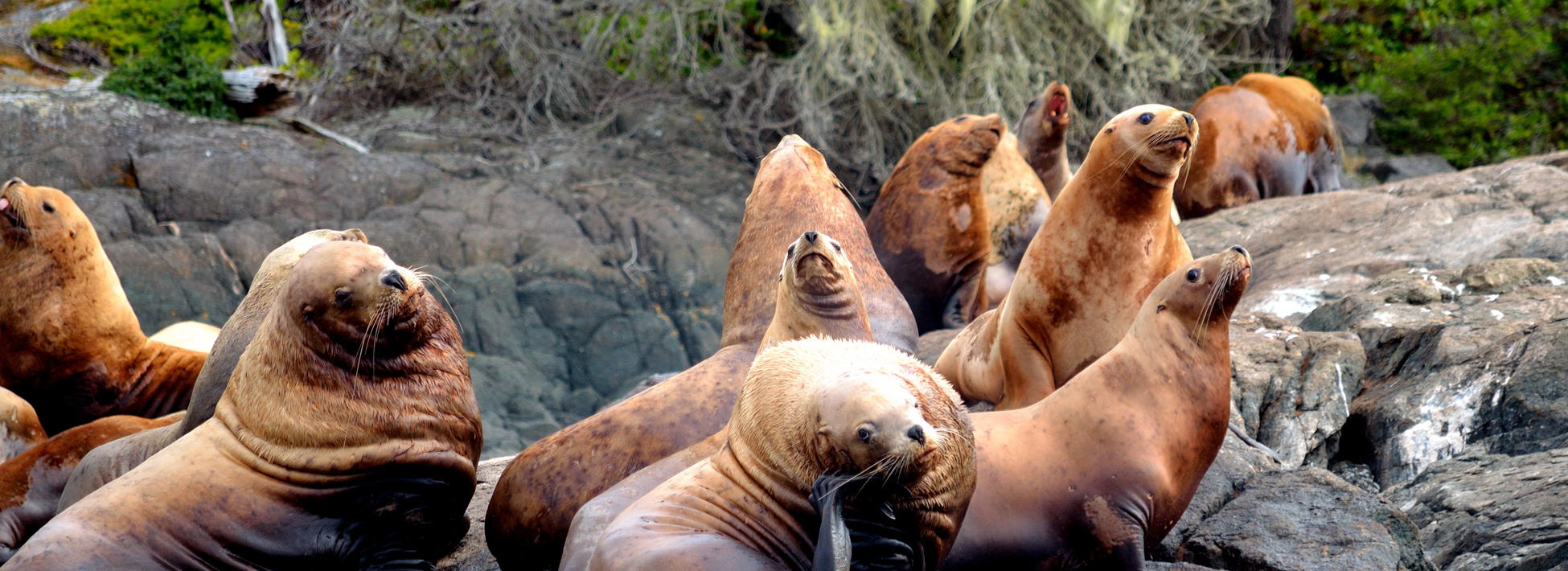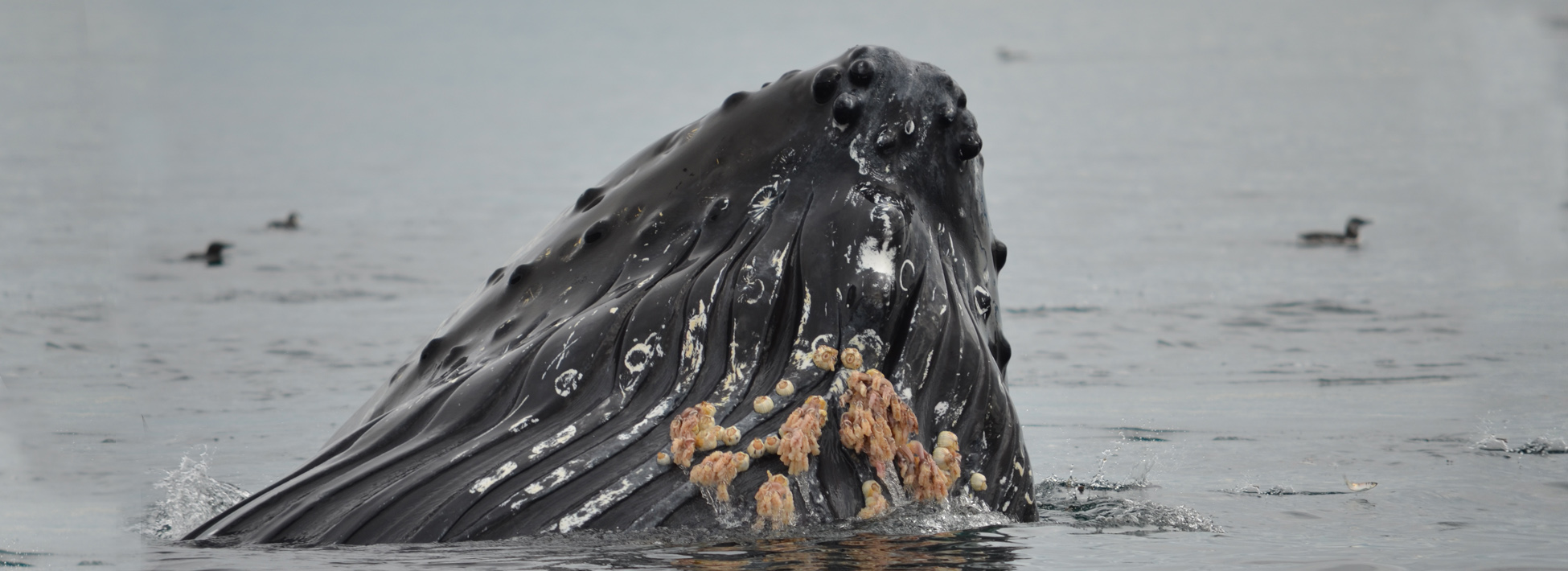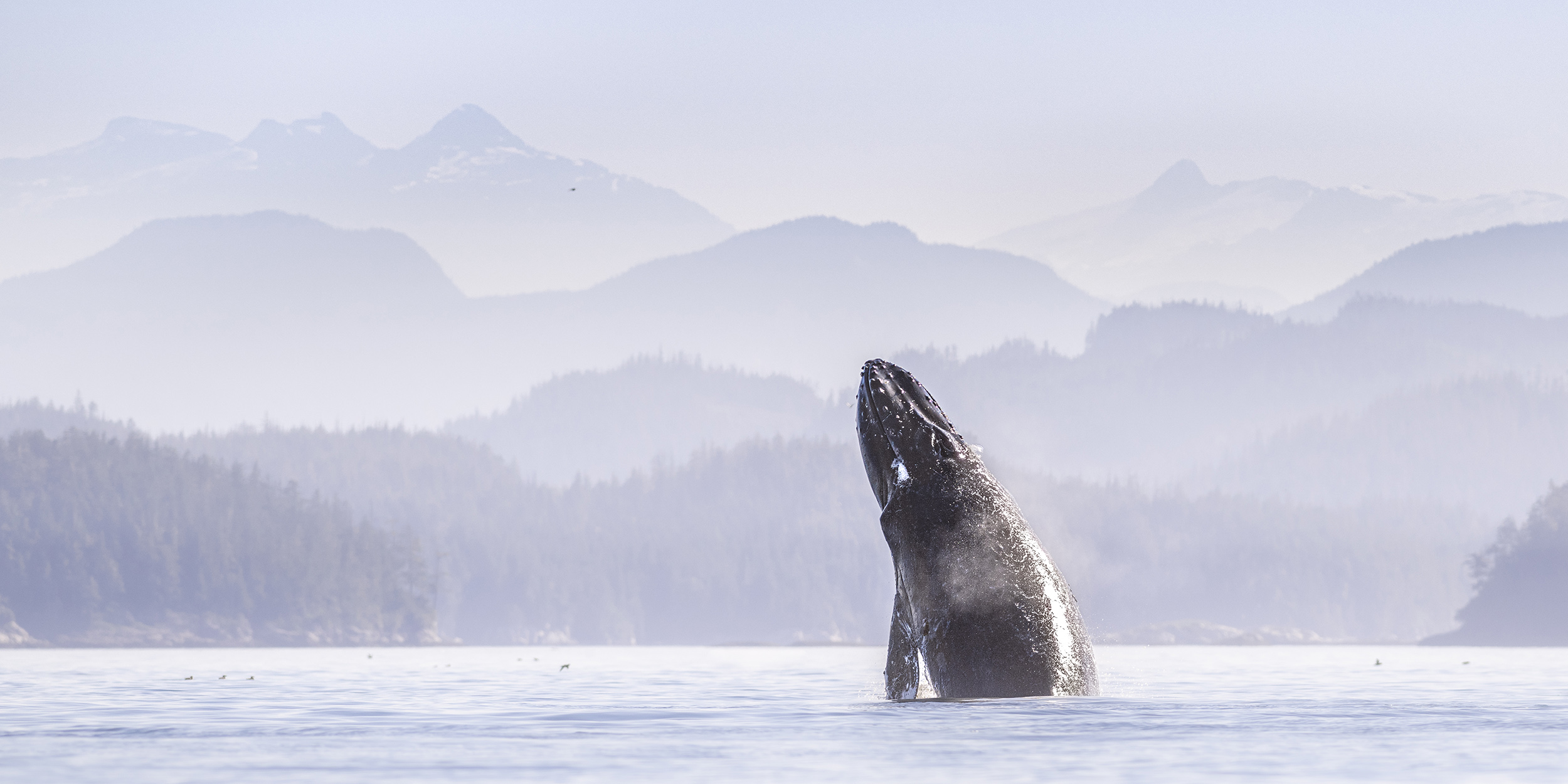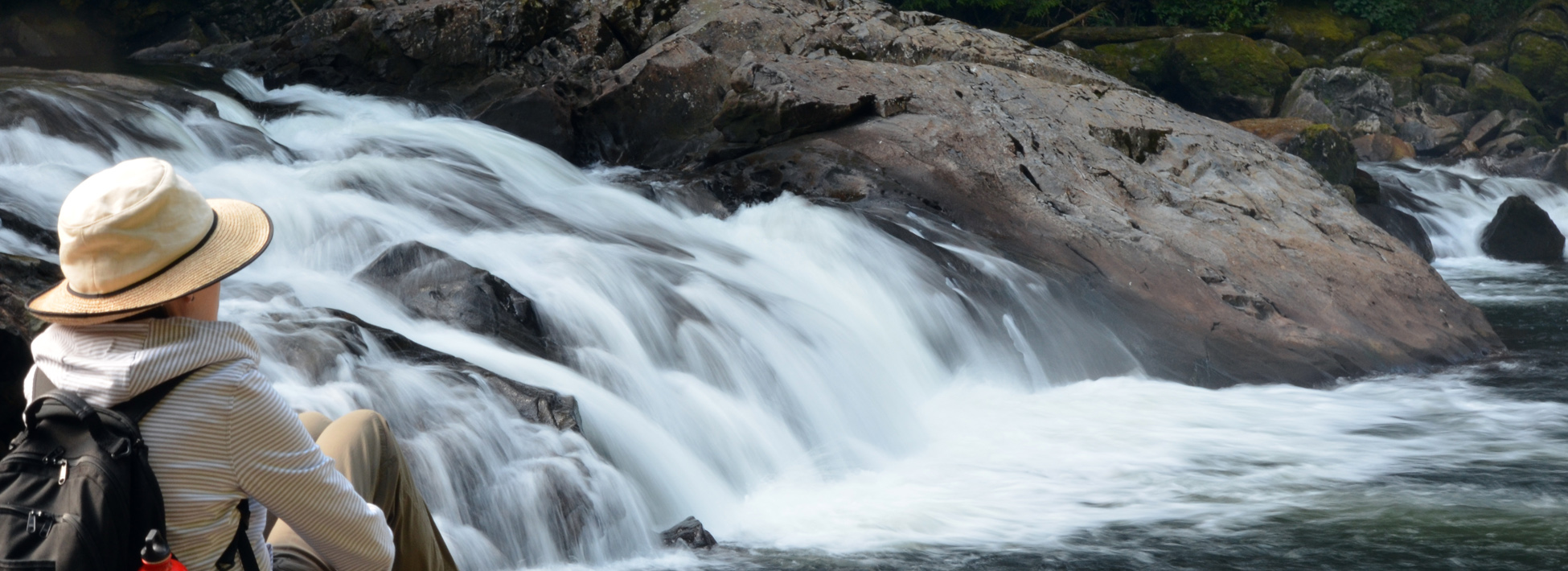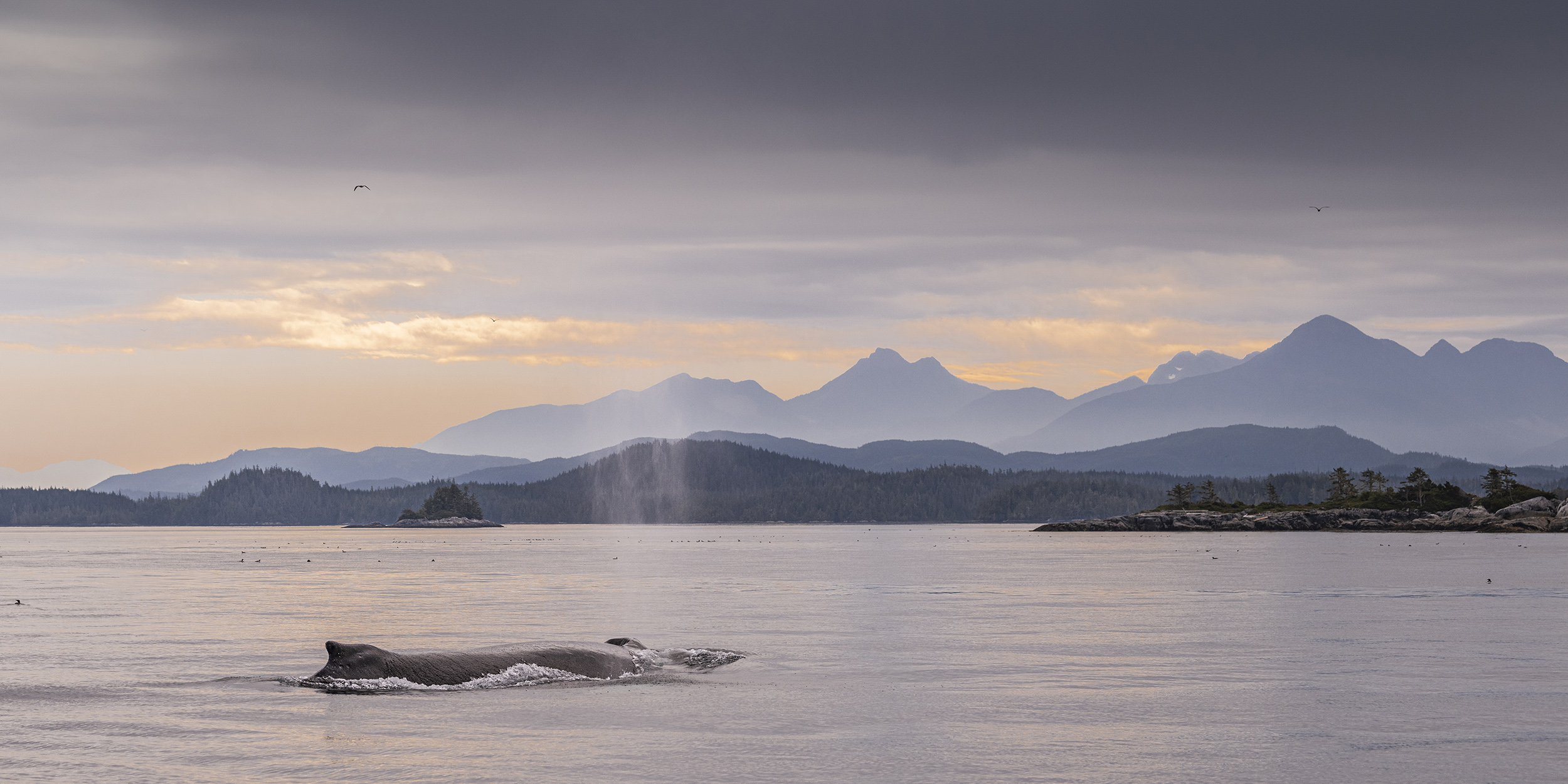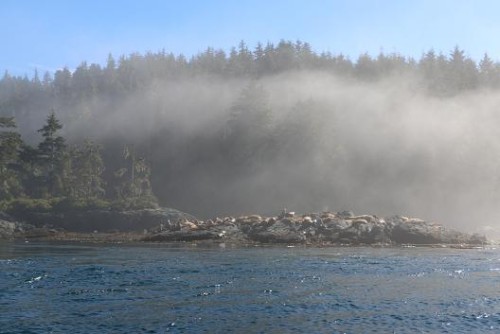
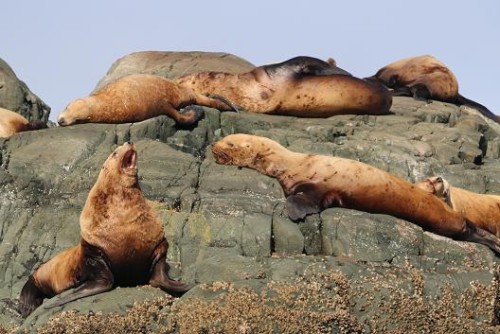
If I read the time stamps on the photos correctly after our time with the killer whales would have come a stop in Telegraph Cove to use the bathroom and stretch our legs. The length of time in the Cove is determined by the guests but in most cases it is short as the action is on the water. After leaving Telegraph we visit the Steller sea lion that spent some time in the area when migrating between California and Alaska. If you look closely to the left of the sea lions there is a bald eagle sitting in the tree drying it’s wings wet from the morning mist. Yesterday’s post continues tomorrow …..
